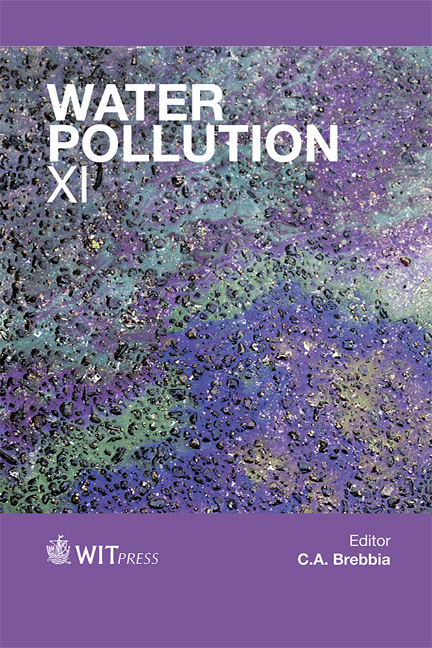Application Of Sequencing Batch Reactor (SBR) For Treatment Of Refinery Wastewater Containing Nickel
Price
Free (open access)
Transaction
Volume
164
Pages
9
Page Range
403 - 411
Published
2012
Size
394 kb
Paper DOI
10.2495/WP120351
Copyright
WIT Press
Author(s)
A. Malakahmad, S. Ishak, U. N. Nasoha M. H. Isa & S. R. Kutty
Abstract
A petroleum refinery is a complex combination of interdependent industrial processes that generate wastewater effluent containing hydrocarbons, heavy metals and dissolved minerals which cause harmful effects to human and environment. While physicochemical systems are widely accepted as effective methods for treatment of industrial wastewater, biological processes are beginning to play an increasing role in the treatment of metal containing effluents. The objective of the present study is to investigate the biological treatment of refinery wastewater containing nickel. The SBR performance was assessed by measuring Chemical Oxygen Demand (COD), Mixed Liquor Suspended Solid (MLSS), Mixed Liquor Volatile Suspended Solid (MLVSS) as well as nickel concentrations. The SBR was operated on a 12-hour cycle basis which consisted of five distinct modes: fill, react, settle, draw, and idle. The wastewater was brought from an equalization tank of a refinery plant and was fed to the reactor after characterization. The nickel concentration ranged from 2.3 to 2.6 mg/L. The experimental results demonstrate COD and nickel removal efficiencies of 70–90% and 77–80%, respectively. Keywords: refinery wastewater, sequencing batch reactor, nickel. 1 Introduction Large amounts of water are being utilized in petroleum refinery industry for cooling, desalting and dehydration processes [1, 2]. Refining process generate wastewater 0.4-1.6 times the volume of crude oil processed [1]. The most important pollutants are hydrocarbons, phenol and dissolved minerals that are
Keywords
refinery wastewater, sequencing batch reactor, nickel





